Audiotec Fischer HELIX M FOUR - 24V Edition Bedienungsanleitung
- Typ
- Bedienungsanleitung

deutsch / english
4-Kanal Verstärker mit integrierter aktiver
Frequenzweiche
4-channel amplier with integrated active
crossover

Sehr geehrter Kunde,
Wir gratulieren Ihnen zum Kauf dieses hochwer-
tigen HELIX Verstärkers.
Audiotec Fischer setzt mit der HELIX M FOUR -
24V Edition neue Maßstäbe im Bereich der
Verstärkertechnik. Dabei protieren Sie als Kun-
de direkt von unserer mehr als 30-jährigen Er-
fahrung in der Forschung und Entwicklung
von Audiokomponenten.
Dieser Verstärker wurde von uns nach neuesten
technischen Erkenntnissen entwickelt und zeichnet
sich durch hervorragende Verarbeitung und eine
überzeugende Anwendung ausgereifter Technolo-
gien aus.
Viel Freude an diesem Produkt wünscht Ihnen das
Team von
AUDIOTEC FISCHER
Allgemeines zum Einbau von HELIX-Kompo-
nenten
Um alle Möglichkeiten des Produktes optimal aus-
schöpfen zu können, lesen Sie bitte sorgfältig die
nachfolgenden Installationshinweise. Wir garantie-
ren, dass jedes Gerät vor Versand auf seinen ein-
wandfreien Zustand überprüft wurde.
Vor Beginn der Installation unterbrechen Sie
den Minusanschluss der Autobatterie.
Wir empfehlen Ihnen, die Installation von einem
Einbauspezialisten vornehmen zu lassen, da der
Nachweis eines fachgerechten Einbaus und An-
schlusses des Gerätes Voraussetzung für die Ga-
rantieleistungen sind.
Installieren Sie Ihren Verstärker an einer trocke-
nen Stelle im Auto und vergewissern Sie sich, dass
der Verstärker am Montageort genügend Kühlung
erhält. Montieren Sie das Gerät nicht in zu kleine,
abgeschlossene Gehäuse ohne Luftzirkulation
oder in der Nähe von wärmeabstrahlenden Teilen
oder elektronischen Steuerungen des Fahrzeuges.
Im Sinne der Unfallsicherheit muss der Verstärker
professionell befestigt werden. Dieses geschieht
über Schrauben, die in eine Montageäche ein-
geschraubt werden, die wiederum genügend Halt
bieten muss.
Bevor Sie die Schrauben im Montagefeld befesti-
gen, vergewissern Sie sich, dass keine elektrischen
Kabel und Komponenten, hydraulische Bremslei-
tungen, der Benzintank etc. dahinter verborgen
sind. Diese könnten sonst beschädigt werden. Ach-
ten Sie bitte darauf, dass sich solche Teile auch in
der doppelten Wandverkleidung verbergen können.
Allgemeines zum Anschluss des M FOUR - 24V
Edition Verstärkers
Der Verstärker darf nur in Kraftfahrzeuge eingebaut
werden, die den 24 V-Minuspol an Masse haben.
Bei anderen Systemen können der HELIX Verstär-
ker und die elektrische Anlage des Kfz beschädigt
werden. Die Plusleitung für die gesamte Anlage
sollte in einem Abstand von max. 30 cm von der
Batterie mit einer Hauptsicherung abgesichert wer-
den. Der Wert der Sicherung errechnet sich aus der
maximalen Stromaufnahme der Car-Hi Anlage.
Verwenden Sie zum Anschluss des Verstärkers
an die Stromversorgung des Fahrzeugs aus-
schließlich geeignete Kabel mit ausreichen-
dem Kabelquerschnitt. Die Sicherungen im
Verstärker dürfen nur mit den gleichen Werten
(2 x 15 A) ersetzt werden, um eine Beschädi-
gung des Gerätes zu verhindern. Höhere Werte
können zu gefährlichen Folgeschäden führen!
Die Kabelverbindungen müssen so verlegt sein,
dass keine Klemm-, Quetsch- oder Bruchgefahr be-
steht. Bei scharfen Kanten (Blechdurchführungen)
müssen alle Kabel gegen Durchscheuern gepols-
tert sein. Ferner darf das Versorgungskabel niemals
mit Zuleitungen zu Vorrichtungen des Kfz (Lüfter-
motoren, Brandkontrollmodulen, Benzinleitungen
etc.) verlegt werden.
Herzlichen Glückwunsch!
2
Allgemeine Hinweise

Anschluss- und Bedienelemente
3
8 Speaker Output
Lautsprecherausgänge für den Anschluss
von Lautsprechersystemen.
9 Power & Protect LED
Die Power & Protect LED zeigt den
Betriebszustand des Verstärkers an.
10 +24 V
Anschluss für das Versorgungsspannungs-
kabel +24 V der Batterie.
11 REM
Anschluss für die Remoteleitung.
12 GND
Anschluss des Massekabels (Minuspol der
Batterie oder Fahrzeugchassis).
1 Line Input
Cinch-Eingänge zum Anschluss eines
Vorverstärkersignals.
2 Highlevel Input
Hochpegel-Lautsprechereingang zum An-
schluss von Werksradios oder Radios ohne
Vorverstärkerausgänge.
3 Input Level
Regler zum Einstellen der Eingangsempnd-
lichkeit des Line und Highlevel Inputs für die
einzelnen Stereo-Kanäle.
4 HPF
Regler zum Einstellen des Hochpasslters
von 15 Hz bis 4.000 Hz.
5 X-Over
Schalter zum Aktivieren der verschiedenen
Filter pro Kanalpaar.
6 Input Mode
Schalter zur Verteilung der Eingangssignale
auf die jeweiligen Verstärkerkanäle.
7 LPF
Regler zum Einstellen des Tiefpasslters der
Kanäle C und D von 40 Hz bis 4.000 Hz.
9 10 11 128
1 2 53 4 6
3 4 5 7

1 Line Input
4-Kanal Vorverstärkereingang zum Anschluss von
Signalquellen, wie z.B. Radios, die mit dem/den
Vorverstärkerausgang/-ausgängen bzw. Line Out-
puts der Signalquelle verbunden werden können.
Achtung: Eine gleichzeitige Verwendung der
Hochpegel- und Vorverstärkersignaleingänge ist
nicht möglich und kann zu Schäden an Ihrem Au-
toradio führen.
2 Highlevel Input
4-Kanal Hochpegel-Lautsprechereingang. Mit Hil-
fe dieses Eingangs kann der Verstärker direkt an
die Lautsprecherausgänge eines Werks- / Nach-
rüstradios angeschlossen werden, sofern dieses
nicht über Vorverstärkerausgänge verfügt. Der
Highlevel-Eingang verfügt über den ADEP-Schalt-
kreis (Advanced Diagnostics Error Protection), der
dafür sorgt, dass der Verstärker auch von OEM
Radios als Lautsprecher erkannt wird und somit im
Werksradio keine Funktionen deaktiviert werden
und kein Eintrag im Fehlerspeicher des Fahrzeugs
erzeugt wird.
Bei Verwendung dieses Eingangs schaltet der Ver-
stärker bei allen handelsüblichen Radios automa-
tisch ein, so dass dieser nicht über den Remote-
Eingang (REM) eingeschaltet werden muss.
Achtung: Verwenden Sie zum Anschluss aus-
schließlich den mitgelieferten Stecker mit integrier-
ten Schraubklemmen.
Achtung: Eine gleichzeitige Verwendung der
Hochpegel- und Vorverstärkersignaleingänge ist
nicht möglich und kann zu Schäden an Ihrem Au-
toradio führen.
3 Input Level
Mit Hilfe dieser Regler kann die Eingangsempnd-
lichkeit der Kanalpaare A/B bzw. C/D an die Aus-
gangsspannung des angeschlossenen Radios an-
gepasst werden. Diese Regler sind keine
Lautstärkeregler, sondern dienen nur der Anpas-
sung. Der Regelbereich des Cinch-Eingangs (Line
Input) liegt zwischen 0,5 - 6 Volt und 1,3 - 13 V für
den Hochpegeleingang (Highlevel Input). Sofern
die Lautsprecherausgänge eines üblichen Radios
verwendet werden (Highlevel), empfehlen wir eine
Einstellung von ca. 9 Volt. Dafür stellen Sie den
Drehregler vom Linksanschlag aus im Uhrzeiger-
sinn etwa auf die 9 Uhr-Position ein.
4 HPF
Mit Hilfe dieses Reglers kann das Hochpasslter
von 15 Hz bis 4.000 Hz eingestellt werden.
Dieser Regler wird aktiviert, wenn der X-Over
Schalter auf HPF (Hochpasslter) eingestellt ist. Bei
dem Kanalpaar C/D ist dieser Regler auch in der
X-Over Schalterstellung LPF (Bandpass) aktiviert
und muss zwingend eingestellt werden.
5 X-Over
Zur Umschaltung der internen, aktiven Frequenz-
weichen auf Hochpass, Fullrange oder Tiefpass
bzw. Bandpass. Die Auswahlmöglichkeiten variie-
ren je nach Kanalpaar.
Kanalpaar A/B: Hochpasslter oder Fullrange
Wird dieser X-Over Schalter auf HPF (Hochpass-
lter) gestellt, so kann mit Hilfe des Reglers 4 (des
Kanalpaares A/B) die Übernahmefrequenz für den
Hochpass eingestellt werden. Bei Schalterstellung
FULL (Fullrange) ist die interne Frequenzweiche
nicht aktiv.
Kanalpaar C/D: Hochpasslter, Fullrange oder Tief-
passlter / Bandpass.
Wird dieser X-Over Schalter auf HPF (Hochpass-
lter) gestellt, so kann mit Hilfe des Reglers 4 des
Kanalpaares C/D die Übernahmefrequenz für den
Hochpass eingestellt werden. Bei Schalterstellung
FULL (Fullrange) ist die interne Frequenzweiche
nicht aktiv. Bei Schalterstellung LPF (Tiefpasslter /
Bandpass) ist das Hochpasslter immer aktiv. Das
heißt, es wird in jedem Fall ein Bandpass gebildet.
Mit dem Regler 4 wird der Hochpass und mit dem
Regler 7 der Tiefpass eingestellt. So kann jeder
beliebige Bandpass zwischen 15 Hz und 4.000 Hz
eingestellt werden.
Inbetriebnahme und Funktionen
4

5
Achtung: Bitte vergewissern Sie sich, dass beim
Einstellen eines Bandpasses die Übernahmefre-
quenzen von Hoch- und Tiefpass mindestens zwei
Oktaven auseinander liegen, um einen Pegelverlust
zu vermeiden! Das heißt: Wird das Tiefpasssignal
z.B. auf 320 Hz eingestellt, so sollte der Hochpass
um mindestens zwei Oktaven tiefer auf ca. 80 Hz
eingestellt werden. (1 Oktave = Frequenzverdopp-
lung oder Frequenzhalbierung). Beim Anschluss
eines Basslautsprechers empfehlen wir, den Hoch-
passregler (Regler 4) als regelbaren Subsoniclter /
tierequenten Hochpasslter zu benutzen oder auf
Linksanschlag (15 Hz) zu drehen, um so einen Sub-
soniclter zu erhalten.
6 Input Mode
Dieser Schalter dient zur Verteilung der Eingangs-
signale auf die jeweiligen Verstärkerkanäle.
4-Kanal Modus: Bei Radios mit zwei Stereoausgän-
gen (Vorne links / rechts, Hinten links / rechts) wird
jeder der vier Eingänge des Verstärkers von dem
dazugehörigen Ausgang des Radios angesteuert.
2-Kanal Modus: Bei Radios mit einem Stereoaus-
gang (links / rechts) werden alle Kanäle des Ver-
stärkers mit diesem Signal versorgt, d.h. es müssen
nur die zwei Cinch bzw. Highlevel-Eingangskanäle
A und B belegt werden. In diesem Modus wird das
Eingangssignal von Kanal A parallel auf Kanal C
und das von Kanal B parallel auf Kanal D weiterge-
leitet. Bitte beachten Sie, dass sich die Fader- und
Balanceregler des Steuergerätes somit gleicherma-
ßen auf Kanal A und C bzw. B und D auswirken.
7 LPF
Mit Hilfe dieses Reglers kann das Tiefpasslter von
40 Hz bis 4.000 Hz für die Kanäle C und D einge-
stellt werden.
8 Speaker Output
Diese Anschlüsse dienen als Lautsprecherausgän-
ge. Die Impedanz der Lautsprecher darf 2 Ohm (im
Brückenbetrieb 4 Ohm) nicht unterschreiten.
9 Power & Protect LED
Die Power & Protect LED zeigt den Betriebszustand
des Verstärkers an.
Grün: Verstärker eingeschaltet und betriebsbereit.
Rot: Es besteht eine Fehlfunktion des Verstär-
kers. Diese Fehlfunktion kann unterschied-
liche Ursachen haben, da die M FOUR mit
verschiedenen elektronischen Schutzschal-
tungen ausgestattet ist. Diese schalten
den Verstärker bei Überhitzung, Über- und
Unterspannung, Kurzschluss am Lautspre-
cherausgang und Fehlanschluss ab. Prüfen
Sie in diesem Fall alle Anschlüsse auf Feh-
ler, wie z.B. Kurzschlüsse, fehlerhafte Ver-
bindungen oder Falscheinstellungen und
Übertemperatur. Sollte sich der Verstärker
nach Beseitigung der Fehlerquelle nicht
wieder einschalten lassen, liegt ein Defekt
vor.
10 +24 V
Das +24 V Versorgungskabel ist am Pluspol der
Batterie anzuschließen. Der empfohlene Quer-
schnitt beträgt mindestens 10 mm².
11 REM
Die Remoteleitung wird mit dem Remote-Ausgang /
Antennenanschluss des Steuergerätes (Radio) ver-
bunden. Dieser ist nur aktiviert, wenn das Steuer-
gerät eingeschaltet ist. Somit wird der Verstärker
mit dem Steuergerät ein- und ausgeschaltet. Dieser
Eingang muss nicht belegt werden, wenn der
Hochpegel-Lautsprechereingang (Highlevel Input)
benutzt wird.

6
Die HELIX M FOUR - 24V Edition wird wie nach-
folgend beschrieben an das Autoradio ange-
schlossen.
Achtung: Für die Durchführung der nachfolgenden
Schritte werden Spezialwerkzeuge und Fachwissen
benötigt. Um Anschlussfehler und Beschädigungen
zu vermeiden, fragen Sie im Zweifelsfall Ihren Ein-
bauspezialisten und beachten Sie zwingend die
allgemeinen Anschluss- und Einbauhinweise (siehe
Seite 2).
1. Anschluss der Vorverstärkereingänge
Diese Eingänge (Line Input) können mit ent-
sprechenden Kabeln (RCA / Cinch-Kabel) an
die Vorverstärker- / Lowlevel- / Cinch-Ausgän-
ge des Radios angeschlossen werden.
Dabei müssen nicht zwingend alle Eingänge
belegt werden. Falls nur zwei Kanäle belegt
werden, empfehlen wir die Kanäle A und B zu
verwenden und den Input Mode Schalter auf
„2CH“ zu stellen. Bei Belegung aller vier Kanäle
wählen Sie bitte die Schalterstellung „4CH“ (si-
ehe Seite 5, Punkt 6; Input Mode).
Die Einschaltautomatik des Verstärkers funk-
tioniert bei den Vorverstärkereingängen nicht,
so dass der Remote-Eingang (REM) zwingend
belegt werden muss.
Achtung: Eine gleichzeitige Verwendung der
Hochpegel- und Vorverstärkersignaleingänge
ist nicht möglich und kann zu Schäden an Ihrem
Autoradio führen.
2. Anschluss der Highlevel-Lautsprecherein-
gänge
Die Hochpegel-Lautsprechereingänge (High-
level Input) können direkt mit den Lautsprecher-
ausgängen des Werks- bzw. Nachrüstradios mit
Hilfe entsprechender Kabel (Lautsprecherkabel
mit max. 1 mm² Querschnitt) verbunden wer-
den.
Wir empfehlen folgende Kanalbelegung:
Kanal A = Vorne links
Kanal B = Vorne rechts
Kanal C = Hinten links
Kanal D = Hinten rechts
Dabei müssen nicht zwingend alle Eingänge
belegt werden. Werden nur zwei Kanäle belegt,
empfehlen wir die Kanäle A und B zu verwen-
den und den Input Mode Schalter auf „2CH“ zu
stellen. Bei Belegung aller vier Kanäle wählen
Sie bitte die Schalterstellung „4CH“ (siehe Sei-
te 5, Punkt 6; Input Mode).
Achten Sie bitte auf eine korrekte Polung! Wenn
Sie einen oder mehrere Anschlüsse verpolen,
kann dadurch die Funktion des Verstärkers
beeinträchtigt werden. Bei Verwendung dieses
Eingangs muss der Remote-Eingang (REM)
nicht belegt werden, da sich der Verstärker au-
tomatisch einschaltet, sobald ein Lautsprecher-
signal anliegt.
3. Einstellung der Eingangsempndlichkeit
Achtung: Es ist zwingend notwendig die
Eingangsempndlichkeit der M FOUR - 24V
Edition an die Signalquelle anzupassen, um
Schäden am Verstärker zu vermeiden.
Um die Eingangsempndlichkeit je Kanalpaar
zu verändern, verwenden Sie die zwei Drehreg-
ler (siehe Seite 4, Punkt 3; Input Level). Die Ein-
stellung dieser Regler beeinusst sowohl die
jeweiligen Vorverstärkereingänge (Line Input)
als auch die Hochpegel-Lautsprechereingänge
(Highlevel Input)! Sofern die Lautsprecheraus-
gänge eines üblichen Radios verwendet wer-
den (Highlevel), empfehlen wir eine Einstellung
12 GND
Das Massekabel sollte am zentralen Massepunkt
(dieser bendet sich dort wo der Minuspol der Bat-
terie zum Metallchassis des Kfz geerdet ist) oder an
einer blanken, von Lackresten befreiten Stelle des
Kfz-Chassis angeschlossen werden. Der empfohle-
ne Querschnitt beträgt mindestens 10 mm².
Inbetriebnahme und Funktionen
Einbau und Installation

7
von ca. 9 Volt. Dafür stellen Sie den Drehregler
vom Linksanschlag aus im Uhrzeigersinn etwa
auf die 9 Uhr-Position ein.
4. Anschluss der Stromversorgung
Vor dem Anschluss des +24 V Versorgungs-
kabels an das Bordnetz muss die Autobatte-
rie abgeklemmt werden.
Das +24 V Stromkabel ist am Pluspol der Bat-
terie anzuschließen. Die Plusleitung sollte in
einem Abstand von max. 30 cm von der Batterie
mit einer Hauptsicherung abgesichert werden.
Der Wert der Sicherung errechnet sich aus der
maximalen Stromaufnahme der gesamten Car-
Hi Anlage (M FOUR - 24V Edition = max. 30 A
RMS bei 24 V Bordnetz).
Verwenden Sie bei kurzen Leitungen (< 1 m)
einen Querschnitt von mindestens 10 mm². Bei
längeren Leitungen empfehlen wir einen Quer-
schnitt von 16 mm² bis 25 mm².
Das Massekabel (gleicher Querschnitt wie
das +24 V Kabel) muss an einem blanken,
von Lackresten befreiten Massepunkt des
Kfz-Chassis oder direkt an dem Minuspol der
Autobatterie angeschlossen werden.
5. Anschluss des Remote-Eingangs
Der Remote-Eingang (REM) muss mit dem Re-
mote-Ausgang des Radios verbunden sein, so-
fern die Vorverstärkereingänge des Verstärkers
als Signaleingänge genutzt werden. Es wird
dringend davon abgeraten, den Remote-Ein-
gang des Verstärkers über das Zündungsplus
des Fahrzeugs zu steuern, um Störgeräusche
beim Ein- und Ausschalten zu vermeiden. Bei
Verwendung des Highlevel-Eingangs ( Highlevel
Input) muss der Remote-Eingang nicht belegt
werden, sofern das angeschlossene Radio
über BTL-Ausgangsstufen verfügt.
6. Anschluss der Lautsprecherausgänge
Die Lautsprecherausgänge können direkt mit
den Lautsprecherleitungen verbunden werden.
Verbinden Sie niemals die Lautsprecherlei-
tungen mit der Kfz-Masse (Fahrzeugkaros-
serie). Dies kann Ihren Verstärker zerstören.
Achten Sie darauf, dass alle Lautsprecher-
systeme phasenrichtig angeschlossen sind,
d.h. Plus zu Plus und Minus zu Minus. Vertau-
schen von Plus und Minus hat einen Totalverlust
der Basswiedergabe zur Folge. Der Pluspol ist
bei den meisten Lautsprechern gekennzeich-
net. Die Impedanz pro Kanal darf 2 Ohm (im
Brückenbetrieb 4 Ohm) nicht unterschreiten,
da sonst die Schutzschaltung des Verstärkers
aktiviert wird. Beispiele für den Lautsprecheran-
schluss nden Sie auf Seite 9.

8
Intelligenter Highlevel-Eingang
Moderne, ab Werk verbaute Autoradios werden
bezüglich der Diagnose der angeschlossenen Laut-
sprecher immer intelligenter. Wird ein Verstärker
stattdessen an das Radio angeschlossen, kommt
es meist zu Fehlermeldungen bis hin zum Wegfall
einzelner Funktionen (wie z.B. Fader).
Der neue ADEP-Schaltkreis (Advanced Diagnos-
tics Error Protection) verhindert all diese Probleme
ohne die Lautsprecherausgänge des Radios bei ho-
hen Pegeln unnötig zu belasten.
Start-Stopfähigkeit
Das Netzteil im HELIX M FOUR - 24V Edition Ver-
stärker stellt die interne Spannungsversorgung
auch bei kurzfristigen Einbrüchen bis hinab zu
12 Volt sicher. Damit ist gewährleistet, dass der
Verstärker auch beim Motorstart voll funktionsfähig
bleibt.
Spezielle Features der HELIX M FOUR - 24V Edition

9
4-Kanal
2-Wege Vollaktiv-Betrieb
Links Rechts
Links Rechts
Hochtöner
Tiefmitteltöner
Kongurationsbeispiele
Hinweis: Die hier angegebenen Einstellungen sind Erfahrungswerte, welche sich in der Praxis als sinnvoll herausgestellt haben. Je nach Laut-
sprechergröße empfehlen wir folgende Hochpassltereinstellungen: ca. 50 Hz bei 16,5 cm LS; ca. 70 Hz bei 13 cm LS; ca. 100 Hz bei 10 cm LS
4-Kanal
Komponentensystem
+ Koaxialsystem
Links Rechts
Links Rechts
Vorne
Hinten
Kanal A/B
Hochpasslter
HPF
Kanal C/D
Hochpasslter
50 - 100 Hz
HPF
50 - 100 Hz
Kanal A/B
Hochpasslter
HPF
Kanal C/D
Bandpass
ca. 3.500 Hz
LPF
Tiefpasslter
ca. 3.500 Hz
Hochpasslter
50 - 100 Hz
Kanal A/B
Hochpasslter
Hochpasslter
ca. 15 Hz
HPF
Kanal C/D
Bandpass
LPF
Tiefpasslter
ca. 80 Hz
50 - 100 Hz
3-Kanal
Komponentensystem
+ Subwoofer
Links Rechts
Subwoofer (C/D gebrückt)
Vorne

10
Leistung RMS / Max.
- @ 4 Ohm .................................................................. 4 x 100 / 200 Watt
- @ 2 Ohm .................................................................. 4 x 100 / 200 Watt
- gebrückt an 4 Ohm ................................................... 2 x 200 / 400 Watt
Verstärkertechnologie ................................................. Class D
Eingänge .................................................................... 4 x Cinch
4 x Hochpegel-Lautsprechereingang
1 x Remote In
Eingangsempndlichkeit ............................................. Cinch 0,5 - 6 Volt
Hochpegel 1,3 - 13 Volt
Eingangsimpedanz Cinch ........................................... 20 kOhm
Eingangsimpedanz Highlevel ..................................... 9 - 33 Ohm
Ausgänge ................................................................... 4 x Lautsprecherausgang
Frequenzbereich......................................................... 10 Hz - 30.000 Hz
Hochpass.................................................................... 15 Hz - 4.000 Hz regelbar
Tiefpass ...................................................................... 40 Hz - 4.000 Hz regelbar
Bandpass.................................................................... 15 Hz - 4.000 Hz regelbar
Flankensteilheit Hoch- / Tiefpass................................ 12 dB/Okt.
Signal- / Rauschabstand Analogeingang.................... 98 dB (A-bewertet)
Klirrfaktor (THD) ......................................................... 0,05 %
Dämpfungsfaktor ........................................................ 100
Betriebsspannung....................................................... 18 - 36 Volt (max. 5 Sek. bis hinab zu 12 Volt)
Leerlaufstromaufnahme.............................................. 550 mA
Sicherung ................................................................... 2 x 15 A Maxi-Stecksicherung (FK3)
Leistungsaufnahme .................................................... DC 24 V 25 A max.
Zusätzliche Features .................................................. Aktive, regelbare Frequenzweiche, Eingangsmodus-
Schalter, Start-Stopfähigkeit, Highlevel-Eingang
mit automatischer Einschaltung und Advanced
Diagnostics Error Protection (ADEP)
Abmessungen (H x B x T) .......................................... 50 x 230 x 154 mm
Technische Daten
Die Garantieleistung entspricht der gesetzlichen
Regelung. Von der Garantieleistung ausgeschlos-
sen sind Defekte und Schäden, die durch Überla-
stung oder unsachgemäße Behandlung entstanden
sind. Eine Rücksendung kann nur nach vorheriger
Absprache in der Originalverpackung, einer de-
taillierten Fehlerbeschreibung und einem gültigen
Kaufbeleg erfolgen.
Technische Änderungen und Irrtümer vorbehalten!
Für Schäden am Fahrzeug oder Gerätedefekte, her-
vorgerufen durch Bedienungsfehler des Gerätes,
können wir keine Haftung übernehmen. Dieses
Produkt ist mit einer CE-Kennzeichnung versehen.
Damit ist das Gerät für den Betrieb in Fahrzeugen
innerhalb der Europäischen Union (EU) zertiziert.
Garantiehinweis

11
Dear Customer,
Congratulations on your purchase of this innovative
and high-qual ity HELIX product.
The HELIX M FOUR - 24V Edition highlights best
quality, excellent manufacturing and state-of-the-art
technology.
Thanks to more than 30 years of experience in re-
search and development of audio products this am-
plier generation sets new standards.
We wish you many hours of enjoyment with your
new HELIX amplier.
Yours,
AUDIOTEC FISCHER Team
General installation instructions for HELIX
components
To prevent damage to the unit and possible injury,
read this manual carefully and follow all installation
instructions. This product has been checked for
proper function prior to shipping and is guaranteed
against manufacturing defects.
Before starting your installation, disconnect the
battery’s negative terminal to prevent damage
to the unit, re and/or risk of injury. For a proper
performance and to ensure full warranty coverage,
we strongly recommend to get this product installed
by an authorized HELIX dealer.
Install your M FOUR in a dry location with sucient
air circulation for proper cooling of the equipment.
The amplier should be secured to a solid mounting
surface using proper mounting hardware. Before
mounting, carefully examine the area around and
behind the proposed installation location to ensure
that there are no electrical cables or components,
hydraulic brake lines or any part of the fuel tank lo-
cated behind the mounting surface. Failure to do so
may result in unpredictable damage to these com-
ponents and possible costly repairs to the vehicle.
General instruction for connecting the HELIX
M FOUR - 24V Edition amplier
The HELIX M FOUR - 24V Edition amplier may
only be installed in vehicles which have a 24 Volts
negative terminal connected to the chassis ground.
Any other system could cause damage to the ampli-
er and the electrical system of the vehicle.
The positive cable from the battery for the complete
system should be provided with a main fuse at a
distance of max. 30 cm from the battery. The val-
ue of the fuse is calculated from the maximum total
current input of the car audio system.
Use only suitable cables with sucient cable
cross-section for the connection of the HELIX
M FOUR - 24V Edition. The fuses may only be
replaced by identically rated fuses (2 x 15 A) to
avoid damage of the amplier.
Prior to installation, plan the wire routing to avoid
any possible damage to the wire harness. All
cabling should be protected against possible
crushing or pinching hazards. Also avoid routing
cables close to potential noise sources such as
electric motors, high power accessories and other
vehicle harnesses.
Congratulations!
General instructions

12
Connectors and control units
8 Speaker Output
Speaker outputs for connecting speaker
systems.
9 Power & Protect LED
This LED indicates the operating mode of the
amplier.
10 +24 V
Connector for the +24 V power cable of the
positive terminal of the battery.
11 REM
Connector for the remote cable.
12 GND
Connector for the ground cable (negative
terminal of the battery or metal body of the
vehicle).
1 Line Input
RCA inputs for connecting lowlevel line
signals.
2 Highlevel Input
Highlevel speaker inputs for connecting a
factory radio or an aftermarket radio without
lowlevel line outputs.
3 Input Level
Control for adjusting the input sensitivity of
the lowlevel Line and Highlevel Inputs for the
individual stereo signals.
4 HPF
Control for adjusting the highpass lter from
15 Hz to 4,000 Hz.
5 X-Over
Switch for activating the lters for each
channel pair.
6 Input Mode
Switch to route input signals to respective
amplier channels.
7 LPF
Control for adjusting the lowpass lter of the
channels C and D from 40 Hz to 4,000 Hz.
9 10 11 128
1 2 53 4 6
3 4 5 7

13
Initial start-up and functions
1 Line Input
4-channel lowlevel line input to connect signal
sourc es such as head units / radios / DSPs.
Important: It is strictly forbidden to use the High-
level Input and lowlevel Line Input at the same time.
This may cause severe damage to the lowlevel line
outputs of your head unit / car radio.
2 Highlevel Input
4-channel highlevel loudspeaker input to connect
the amplier directly to the loudspeaker outputs of
OEM / aftermarket radios that do not have any low-
level line outputs.
The Highlevel Input is equipped with our proprietary
ADEP circuit (Advanced Diagnostics Error Protec-
tion) which ensures that the car radio detects the
amplier as a speaker and thus neither any function
of the radio (e.g. fader) will be deactivated nor any
error log in the CPU of the car will be created.
If this input is used the remote input (REM) does
not need to be connected as the amplier will
automatically turn on once a loudspeaker signal is
applied.
Attention: Solely use the pluggable screw-terminal
for the highlevel connector which is included in de-
livery!
Important: It is strictly forbidden to use the High-
level Input and lowlevel Line Input at the same time.
This may cause severe damage to the lowlevel line
outputs of your car radio.
3 Input Level
These controls are used to adapt the input sensi-
tivity of the channel pairs A/B and C/D to the output
voltage of the connected signal source.
This is not a volume control, it´s only for adjusting
the amplier gain. The control range of the RCA /
Line Input (lowlevel) is 0.5 - 6 Volts and 1.3 - 13 Volts
for the Highlevel Input. If the Highlevel Input is used
in combination with a standard car radio we recom-
mend an input sensitivity of roughly 9 Volts. For this
purpose, turn the control from max. CCW position to
9 o’clock position.
4 HPF
This control is used to adjust the crossover frequency
of the highpass lter from 15 Hz to 4,000 Hz. This
control is activated if the X-Over switch of the spe-
cic channel pair is set to HPF (highpass lter). On
channel pair C/D it is also activated in LPF / Band-
pass and its adjustment is mandatory.
5 X-Over
This switch allows to set the internal crossover to
highpass, fullrange or lowpass / bandpass mode.
The lter options depend on the channel pair.
Channel pair A/B: Highpass lter or fullrange
If this X-Over switch is set to HPF (highpass lter)
the crossover frequency for the highpass can be ad-
justed with control 4 of the channel pair A/B.
At switch position FULL (fullrange) the crossover is
bypassed.
Channel pair C/D: Highpass lter, fullrange or low-
pass lter / bandpass.
If this X-Over switch is set to HPF (highpass lter)
the crossover frequency for the highpass can be
adjusted with control 4 of the channel pair C/D. At
switch position FULL (fullrange) the crossover is
bypassed.
At switch position LPF (lowpass lter / bandpass)
the highpass is always active. That means a band-
pass is created in any case.
By adjusting the highpass (control 4) and lowpass
(control 7) lter any bandpass between 15 Hz and
4,000 Hz can be realized.
Caution: To avoid a loss of gain make sure that
the crossover frequencies of the high- and lowpass
lters do have an interval of at least two octaves
when generating a bandpass.
That means if the lowpass signal is adjusted to

14
Initial start-up and functions
320 Hz the highpass should be adjusted to 80 Hz
or less (one octave = doubled frequency or halved
frequency). If a subwoofer is connected we recom-
mend to use the highpass control (control 4) as vari-
able subsonic / low-frequency highpass lter or turn
it counterclockwise to 15 Hz to get a subsonic lter.
6 Input Mode
This switch is used to route the input signals to the
respective amplier channels.
4-channel mode: If the head unit / car radio provides
two stereo outputs (front left / right, rear left / right),
all four signal inputs of the amplier are supplied
with the corresponding output signals of the head
unit / car radio.
2-channel mode: If the head unit / car radio only
provides one stereo output, all amplier channels
are supplied with this signal. This means, that only
the RCA / highlevel inputs of the channels A and B
need to be connected. In this mode the input signal
of channel A is routed to channel C and channel
B is routed to channel D. Please consider that the
fader and balance control of the head unit have the
same eect on channels A and C and respectively
B and D.
7 LPF
This control is used to adjust the crossover frequen-
cy of the lowpass lter of the channels C and D from
40 Hz to 4,000 Hz.
8 Speaker Output
Speaker outputs of the channels A - D to connect
speaker systems. The impedance per channel
must not be lower than 2 Ohms (4 Ohms in bridged
mode).
9 Power & Protect LED
The power and protect LED indicates the operating
mode of the amplier.
Green: The amplier is ready for operation.
Red: A malfunction has occurred. A malfunc-
tion may have dierent causes as the
HELIX M FOUR - 24V Edition is equipped
with several protection circuits. These
protections shut o the amplier in case
of overheating, over- and undervoltage,
short-circuit on loudspeakers and false
connection. Please check for connecting
failures such as short-circuits, wrong con-
nections, wrong adjustments and over
temperature. If the amplier does not
turn on it is defective and has to be sent
to your local authorized dealer for repair
service. A detailed description of the mal-
function and the purchase receipt has to
be attached.
10 +24 V
Connect the +24 V power cable to the positive ter-
minal of the battery. Recommended cross section:
min. 10 mm² / AWG 8.
11 REM
The remote lead should be connected to the remote
output / automatic antenna (aerial positive) output
of the head unit / car radio. This is only activated
if the head unit / car radio is switched on. Thus the
amplier is switched on and o together with the
head unit / car radio. This input needn’t to be as-
signed if the Highlevel Input is used.
12 GND
The ground cable should be connected to a common
ground reference point (this is located where the
negative terminal of the battery is grounded to the
metal body of the vehicle) or to a prepared metal lo-
cation on the vehicle chassis i.e. an area which has
been cleaned of all paint residues. Recommended
cross section: min. 10 mm² / AWG 8.

15
Installation
Connection of HELIX M FOUR - 24V Edition to
the head unit / car radio:
Caution: Carrying out the following steps will re-
quire special tools and technical knowledge. In or-
der to avoid connection mistakes and / or damage,
ask your dealer for assistance if you have any ques-
tions and follow all instructions in this manual (see
page 11). It is recommended that this unit will be
installed by an authorized HELIX dealer.
1. Connecting the lowlevel line inputs
Use the correct cable (RCA / Cinch cable) to
connect these inputs to the lowlevel line outputs
of your car radio. It is not mandatory to use all
lowlevel line inputs. If only two channels will be
connected we recommend to use the channels
A and B and set the Input Mode switch to “2CH”.
When all channels will be used please choose
switch position “4CH” (see page 14, item 6; In-
put Mode). The automatic turn-on circuit does
not work when using the lowlevel line inputs. In
this case the remote input (REM) has to be con-
nected to activate the HELIX M FOUR.
Important: It is strictly forbidden to use the
Highlevel Input and lowlevel Line Input at the
same time. This may cause severe damage to
the lowlevel line outputs of your car radio.
2. Connecting the highlevel speaker inputs
The highlevel loudspeaker inputs can be con-
nected directly to the loudspeaker outputs of an
OEM or aftermarket radio using appropriate ca-
bles (loudspeaker cables with 1 mm² / AWG 18
max.).
We recommend the following channel assign-
ment:
Channel A = Front left
Channel B = Front right
Channel C = Rear left
Channel D = Rear right
Actually it is not mandatory to use all highlevel
speaker inputs. If only two channels will be con-
nected we recommend to use the channels A
and B and set the Input Mode switch to “2CH”.
When all channels will be used please choose
switch position “4CH” (see page 14, item 6; In-
put Mode).
Make sure that the polarity is correct. If one
or more connections have reversed polarity it
may aect the performance of the amplier. If
this input is used the remote input (REM) does
not need to be connected as the amplier will
automatically turn on once a loudspeaker signal
is applied.
3. Adjustment of the input sensitivity
Attention: It is mandatory to properly adapt
the input sensitivity of the M FOUR - 24V
Edition to the signal source in order to avoid
damage to the amplier.
If you want to change the input sensitivity of the
channel pairs use the two Input Level controls
(see page 13, item 3; Input Level). The settings
of the controls aect both the lowlevel line in-
puts (Line Input) and the highlevel speaker in-
puts ( Highlevel Input)! If the Highlevel Input is
used in combination with a standard car radio
we recommend an input sensitivity of roughly
9 Volts. For this purpose, turn the control from
max. CCW position to 9 o’clock position.
4. Connection to power supply
Make sure to disconnect the battery before
installing the HELIX M FOUR - 24V Edition!
Connect the +24 V power cable to the positive
terminal of the battery. The positive wire from
the battery to the amplier power terminals
needs to have an inline fuse at a distance of
less than 12 inches (30 cm) from the battery.
The value of the fuse is calculated from the
maximum total current draw of the whole car
audio system (M FOUR 24V Edition= max. 30 A
RMS at 24 V power supply). If your power wires
are short (less than 1 m / 40”) then a wire gauge
of 10 mm² / AWG 8 will be sucient. In all other
cases we strongly recommend gauges of 16 -
25 mm² / AWG 6 – 4!
The ground cable (same gauge as the +24 V
wire) should be connected to a common ground
reference point (this is located where the neg-
ative terminal of the battery is grounded to the
metal body of the vehicle), or to a prepared met-
al location on the vehicle chassis, i.e. an area
which has been cleaned of all paint residues.

5. Connecting the remote input
The remote input (REM) has to be connected
to the radio remote output if the ampliers low-
level line inputs are used as signal inputs. We
do not recommend controlling the remote input
via the ignition switch to avoid pop noise during
turn on/o.
If the Highlevel Input is used this input does not
need to be connected as long as the car radio
has BTL output stages.
6. Connecting the loudspeaker outputs
The loudspeaker outputs can be connected
directly to the wires of the loudspeakers. Never
connect any of the loudspeaker cables to the
chassis ground as this will damage your ampli-
er and your speakers.
Ensure that the loudspeakers are correctly con-
nected (in phase), i.e. plus to plus and minus
to minus. Exchanging plus and minus causes
a total loss of bass reproduction. The positive
terminal is indicated on most speakers. The im-
pedance of each channel must not be less than
2 Ohms (4 Ohms in bridged mode), otherwise
the amplier protection will be activated. Exam-
ples for speaker congurations can be found on
page 18.
16
Installation

17
Smart highlevel input
The latest generation of OE car radios incorpo-
rates sophisticated possibilities of diagnosing the
connected speakers. If a common amplier will be
hooked up failure messages and loss of specic
features (e.g. fader function) quite often appear -
but not with the M FOUR - 24V Edition.
The new ADEP circuit (Advanced Diagnostics Error
Protection) avoids all these problems without load-
ing the speaker outputs of the OE radio during high
volumes unnecessarily.
Start-Stop capability
The switched power supply of the
HELIX M FOUR - 24V Edition assures operation
even if the battery’s voltage drops down to 12 Volts
during engine crank.
Unique Features of the HELIX M FOUR - 24V Edition

18
Examples for speaker congurations
Note: The values listed here are empirical values that have been approved as useful in practice. Depending on the size of the loudspeaker
we recommend the following highpass lter settings: ca. 50 Hz for 6.5”/16.5 cm LS; ca. 70 Hz for 5.25”/13 cm LS; ca. 100 Hz for 4”/10 cm LS
Channel A/B
Highpass lter
HPF
Channel C/D
Highpass lter
50 - 100 Hz
HPF
50 - 100 Hz
Channel A/B
Highpass lter
HPF
Channel C/D
Bandpass
ca. 3,500 Hz
LPF
Lowpass lter
ca. 3,500 Hz
Highpass lter
50 - 100 Hz
Channel A/B
Highpass lter
Highpass lter
ca. 15 Hz
HPF
Channel C/D
Bandpass
LPF
Lowpass lter
ca. 80 Hz
50 - 100 Hz
4-channel
2-way fully active operation
Left Right
Left Right
Tweeters
Mid/bass
4-channel
Component system
+ coaxial system
Left Right
Left Right
Front
Rear
3-channel
Component system
+ subwoofer
Left Right
Subwoofer (C/D bridged)
Front

19
The limited warranty comply with legal regulations.
Failures or damages caused by overload or im-
proper use are not covered by the warranty. Please
return the defective product only with a valid proof
of purchase and a detailed malfunction description.
Technical specications are subject to change!
Errors are reserved! For damages on the vehicle
and the device, caused by handling errors of the
device, we can’t assume liability. These devices are
certied for the use in vehicles within the European
Community (EC).
Technical Data
Warranty Disclaimer
Output power RMS / max.
- @ 4 Ohms ................................................................ 4 x 100 / 200 Watts
- @ 2 Ohms ................................................................ 4 x 100 / 200 Watts
- bridged @ 4 Ohms ................................................... 2 x 200 / 400 Watts
Amplier technology ................................................... Class D
Inputs .......................................................................... 4 x RCA / Cinch
4 x Highlevel speaker input
1 x Remote In
Input sensitivity ........................................................... RCA / Cinch 0.5 - 6 Volts
Highlevel 1.3 - 13 Volts
Input impedance RCA / Cinch .................................... 20 kOhms
Input impedance highlevel .......................................... 9 -33 Ohms
Outputs ....................................................................... 4 x Speaker output
Frequency response ................................................... 10 Hz - 30,000 Hz
Highpass..................................................................... 15 Hz - 4,000 Hz adjustable
Lowpass ..................................................................... 40 Hz - 4,000 Hz adjustable
Bandpass.................................................................... 15 Hz - 4,000 Hz adjustable
Slope high- / lowpass ................................................. 12 dB/Oct.
Signal-to-noise ratio analog input ............................... 98 dB (A-weighted)
Distortion (THD) .......................................................... 0.05 %
Damping factor ........................................................... 100
Operating voltage ....................................................... 18 - 36 Volts (max. 5 sec. down to 12 Volts)
Idle current.................................................................. 550 mA
Fuse............................................................................ 2 x 15 A Maxi-fuse (APX)
Power rating ............................................................... DC 24 V 25 A max.
Additional features ...................................................... Active, adjustable crossover, input mode switch,
Start-Stop capability, highlevel input with automatic
turn on function and Advanced Diagnostics Error
Protection (ADEP)
Dimensions (H x W x D) ............................................. 50 x 230 x 154 mm / 2.00 x 9.06 x 6.06”

Audiotec Fischer GmbH
Hünegräben 26 · 57392 Schmallenberg · Germany
Tel.: +49 2972 9788 0 · Fax: +49 2972 9788 88
E-mail: helix@audiotec-scher.com · Internet: www.audiotec-scher.com
Made in China
-
 1
1
-
 2
2
-
 3
3
-
 4
4
-
 5
5
-
 6
6
-
 7
7
-
 8
8
-
 9
9
-
 10
10
-
 11
11
-
 12
12
-
 13
13
-
 14
14
-
 15
15
-
 16
16
-
 17
17
-
 18
18
-
 19
19
-
 20
20
Audiotec Fischer HELIX M FOUR - 24V Edition Bedienungsanleitung
- Typ
- Bedienungsanleitung
in anderen Sprachen
Verwandte Artikel
-
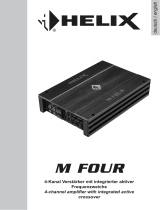 Audiotec Fischer HELIX M FOUR Bedienungsanleitung
Audiotec Fischer HELIX M FOUR Bedienungsanleitung
-
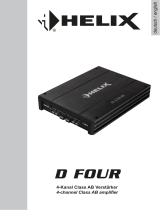 Audiotec Fischer HELIX D FOUR Bedienungsanleitung
Audiotec Fischer HELIX D FOUR Bedienungsanleitung
-
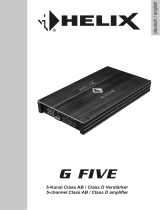 Audiotec Fischer HELIX G FIVE Bedienungsanleitung
Audiotec Fischer HELIX G FIVE Bedienungsanleitung
-
Helix HELIX P TWO Bedienungsanleitung
-
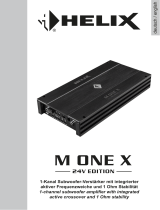 Audiotec Fischer HELIX M ONE X - 24V Edition Bedienungsanleitung
Audiotec Fischer HELIX M ONE X - 24V Edition Bedienungsanleitung
-
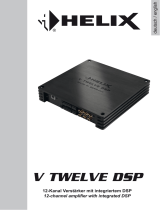 Audiotec Fischer HELIX V TWELVE DSP Bedienungsanleitung
Audiotec Fischer HELIX V TWELVE DSP Bedienungsanleitung
-
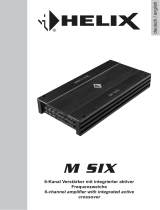 Audiotec Fischer HELIX M SIX Bedienungsanleitung
Audiotec Fischer HELIX M SIX Bedienungsanleitung
-
Helix V TWELVE DSP Bedienungsanleitung
-
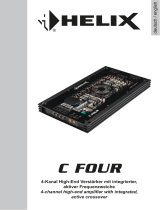 Audiotec Fischer HELIX C FOUR Bedienungsanleitung
Audiotec Fischer HELIX C FOUR Bedienungsanleitung
-
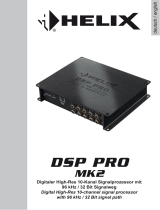 Audiotec Fischer HELIX DSP PRO MK2 Bedienungsanleitung
Audiotec Fischer HELIX DSP PRO MK2 Bedienungsanleitung



























